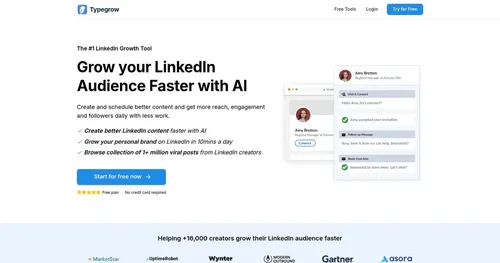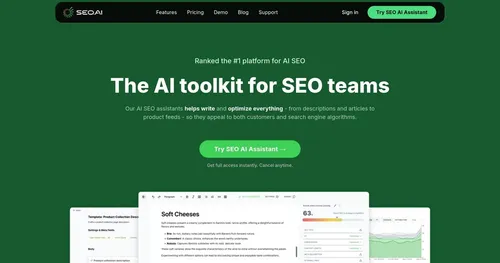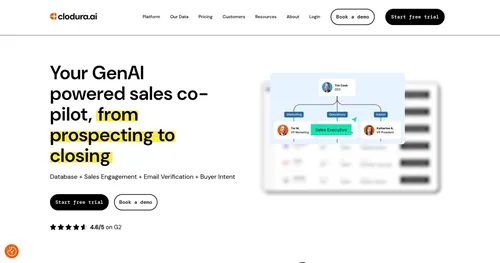SEOwind

Picture me last Wednesday, coffee in hand, staring at a blank doc for a client’s SaaS blog on API integrations, deadline looming like a storm cloud. I had heard whispers about SEOwind from a forum post, so I signed up for the three-day trial, figuring why not give this AI a whirl for a morning. Turns out, it was less a tool and more a clever sidekick, churning out a Smart Brief Generator outline that nailed competitor gaps I would have missed in hours of manual digging. The SERP pull felt alive, grouping keywords into clusters that screamed opportunity, and tossing in stats from top results, all while I sipped round two. By lunch, I had a draft from the AI Article Writer, laced with EEAT cues like expert quotes it sourced automatically, reading smoother than my usual frantic scribbles.
I liked how it handed off control without stealing the show, the scoring system lit up green on topical depth but flagged a thin section on user intent, prompting a quick tweak that made the piece pop. Users echo this on X, one marketer shared in July how it cut their edit time in half for B2B posts, freeing bandwidth for graphics and outreach. Surprise hit when I ran the Content Update Engine on an old guide, it spotted intent drift from competitor refreshes and rewrote hooks with fresh data, boosting readability scores overnight, who knew AI could play detective like that? Versus Frase, which I glanced at for comparison, SEOwind edges out with deeper automation, no endless template swaps, though Frase’s topic modeling is snappier for broad ideation.
Not all smooth sailing, though. The dashboard threw a curveball with its data density, I fumbled a bit syncing my brand voice inputs, and at $49 entry level, it nips at budgets tighter than Clearscope’s $170 pro tier, which packs similar scoring but skips the full write cycle. A Reddit user in August griped about the trial’s two-article cap cramping real tests, fair point, it left me wanting more before deciding. Still, the wit in its prompts, suggesting meta tweaks with punchy alternatives, kept me grinning, like the tool had a personality tuned for marketers who hate bland bots.
Diving deeper that afternoon, I chained a brief to an article, watched internal linking suggestions weave in site pillars effortlessly, a neat trick for topical authority that competitors like Clearscope handle clunkier. X posts from SEO pros in June praised its LLM optimization, ensuring chats like ChatGPT cite your stuff, a sly edge as search evolves. For small teams, this scales without headcount bloat, though power users might itch for more API hooks.
If you’re dipping toes like I did, start small: pick one lagging post, let the update engine rework it, measure the lift in a week, then layer in briefs for fresh wins, that momentum will hook you fast.
Video Overview ▶️
What are the key features? ⭐
- Smart Brief Generator: Pulls SERP and keyword data to build content outlines in minutes.
- AI Article Writer: Combines expert inputs and AI to produce EEAT-optimized content that ranks well.
- Content Update Engine: Identifies underperforming pages and refreshes them with competitor analysis.
- SEO + Human Quality Scoring: Measures EEAT, relevance, and readability for content evaluation.
- Keyword Research Missions: Discovers and clusters keywords integrated into automated workflows.
Who is it for? 🤔
Examples of what you can use it for 💭
- Solo Marketer: Generates weekly briefs to plan SEO posts that align with business goals quickly.
- Content Agency: Automates updates for client sites, ensuring EEAT compliance across multiple domains.
- SEO Specialist: Uses scoring to audit and refine existing articles for better topical authority.
- B2B Writer: Incorporates expert quotes and stats into drafts for authoritative lead-gen pieces.
- E-commerce Manager: Researches product keywords to create optimized descriptions that drive sales.
Pros & Cons ⚖️
- Saves research time
- Strong EEAT focus
- Scalable for teams
- Steep learning curve
- Limited trial
FAQs 💬
Related tools ↙️
-
eesel AI Automates customer support with AI agents that integrate across platforms
-
 Typegrow
An AI-powered tool designed to help users grow their LinkedIn audience
Typegrow
An AI-powered tool designed to help users grow their LinkedIn audience
-
 SEO.ai
Uncovers valuable keywords and produces optimized content via AI and Google SERP analysis
SEO.ai
Uncovers valuable keywords and produces optimized content via AI and Google SERP analysis
-
Tely AI Generates SEO-optimized content autonomously for B2B lead generation
-
CreatorBuddy Optimizes Twitter/X content creation with AI-driven insights and tools
-
 Clodura
An AI-powered sales prospecting platform that streamlines lead generation and sales engagement
Clodura
An AI-powered sales prospecting platform that streamlines lead generation and sales engagement

